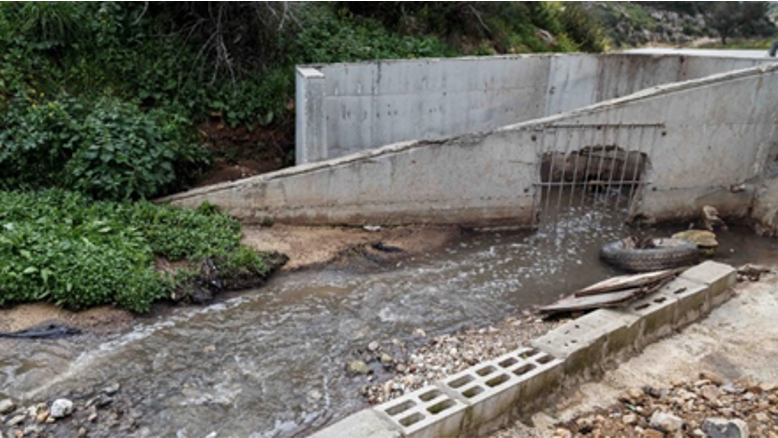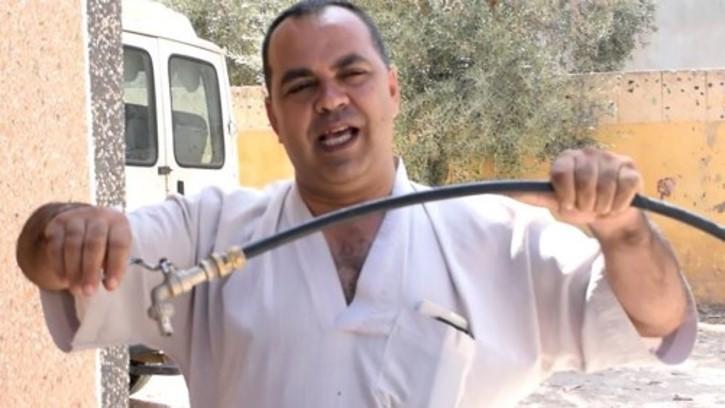
During the olive harvest of 2020, Channel 12’s reporter, Ohad Hamo, came to write about Palestinian farmers in Burqa village, close to Ramallah. He was violently attacked by the ‘hill youth’ – youths and adult settlers from the West Bank settlements’ outposts. Everyone in Israel saw this attack since it was recorded in a television item on Israel’s most popular channel, but only few know that this is the regular fate of most Palestinian villagers near Jewish settlements. Such assaults take place all year, and during the olive harvest, they get even worse. The vandals loot, burn and uproot hundreds of olive trees, throw stones into homes, shatter windows and wreak bodily harm on villagers who live in constant fear, day and night.
When the assault is directed at Israeli soldiers as well, some of it manages to become public knowledge in Israel, but unfortunately, the army, supposed to protect all West Bank inhabitants, does not protect its Palestinian inhabitants and at times even collaborates with the escalating violence towards them. Let us remember that according to occupied territories international law, the army is supposed to protect the occupied population. This does not take place here. The villagers of the West Bank are exposed to settlers' violence and are totally unprotected.
The villages hit hardest are those located inside Area A or B and part of whose lands have been defined as Area C (Palestinian territory under full Israeli control) as an interim phase of the Oslo Accords. These areas are also inhabited by settlers some of whose inhabitants are especially violent. Burka village was harmed by the settlers of the illegal outpost Oz Zion, Kusra village by settlers of the illegal outpost of Esh Kodesh, and the villages of Bourin, Madame, ‘Urif, and Asira Al Qabiliyah suffer violence exerted by settlers from Yitzhar and the outpost Giv’at Ronen (near Beracha Mountain). And there are many many more. However, not only do the settlers vandals go unpunished – usually, Israeli soldiers watch the goings-on and do not interfere, and sometimes even collaborate in the action. No wonder, then, that such escalating violence reached the extreme deed of murdering by fire the Dawabshae family in Douma village, on July 31, 2015.
Harassment is not the only way to damage Palestinian villages. The official annexation has been stopped for the time being, but in fact, de-facto annexation has been going on for decades in three main ways:
First – Palestinian lands by the hundreds of thousands of dunams in Area C (60% of the entire West Bank) have become ‘state land’ by the implementation of an Ottoman law of 1858, and Jewish settlers have been founded on them.
Second – Palestinian land has been taken over for ‘temporary’ military purposes and became either a settler-colony or a closed military zone and out of bounds for Palestinians.
Third – Palestinian land is sequestered for ‘public’ purposes, namely roads and nature reserves usually out of bounds for Palestinians.
We shall expound here on a different type of creeping annexation which we witness during our visits in the West Bank villages: taking over farmlands in the proximity of settlers and annexing them.
The State of Israel does not enable Palestinian farmers to build anything on their lands lying inside Area C, but in order to tend their lands lying close to settlers, they need to coordinate with the army. Meaning the Palestinian farmer needs to be issued a special permit to access and work on his privately-owned land. Such coordination is held in order to prevent friction between settlers and Palestinians, as it were. In actual fact, it prevents Palestinian villagers from tending their land as is necessary and thus they lose their property and source of livelihood.
Most of the land robbery takes place in Area C, but lately, it has expanded into Area B, among the village neighborhoods. This is an ongoing process that has escalated during this Corona time, as Israeli and international activists cannot come to take photos and report.

The suffering of West Bank villages does not end with violence harassment and creeping annexation. It also consists of reduced water sources vis-à-vis the plenty of water flowing to the settler-colonies. The right to water is perhaps the most vital of all basic human rights. According to the World Health Organization, the minimal quantity of water essential per person is 100 liters a day. Most of the Palestinian villages receive much less.
In summer 2016, in Iskaka village, there were days when villagers had running water only 8 hours every other day; in 2017, Qablan villagers (numbering 12,000) had water running in homes only 20 days a month, and even less in Turmus Aya whose villagers received water only 14 days a month. The state of villagers living in many communities up the West Bank hill range, about half of the population, is even worse: they often have no water at all, or very little (Qablan, Huwarra and Zeita Jama’in). This happens every time the Israeli water company Mekorot reduces water pressure by partial closure of water mains (from MachsomWatch Village Team’s Report, March 2018).
of water mains (from MachsomWatch Village Team’s Report, March 2018).
Since 1982, Mekorot controls all water sources. While settler-colonies are provided with a continuous and unlimited water supply, the Palestinians receive water as a limited and interrupted supply. Consequently, they have had to give up their farm produce and sheep and goat milk products, in favor of olive trees alone, that do not need irrigation.
Frustrated they watch their settler-colonist neighbors, (some of whom inhabit their Palestinian-owned land) enjoying their swimming pools alongside blooming gardens, while the Palestinians are forced to purchase water in tankers at a double price for even their most basic needs. Settler-colonists have been known to shoot at water tanks on village roofs and perforating them.
Furthermore, sewage and waste stream down to the Palestinian villages from the settler-colonies that are located above them.



